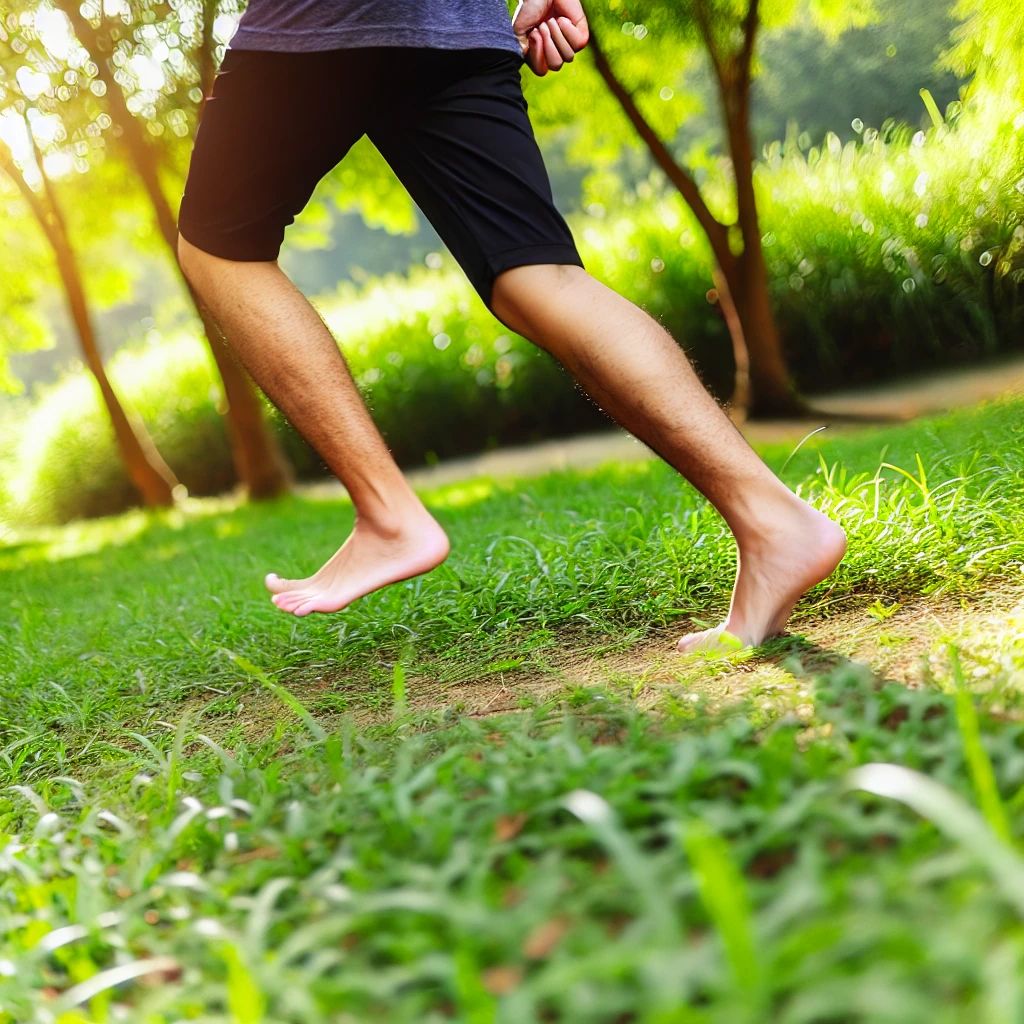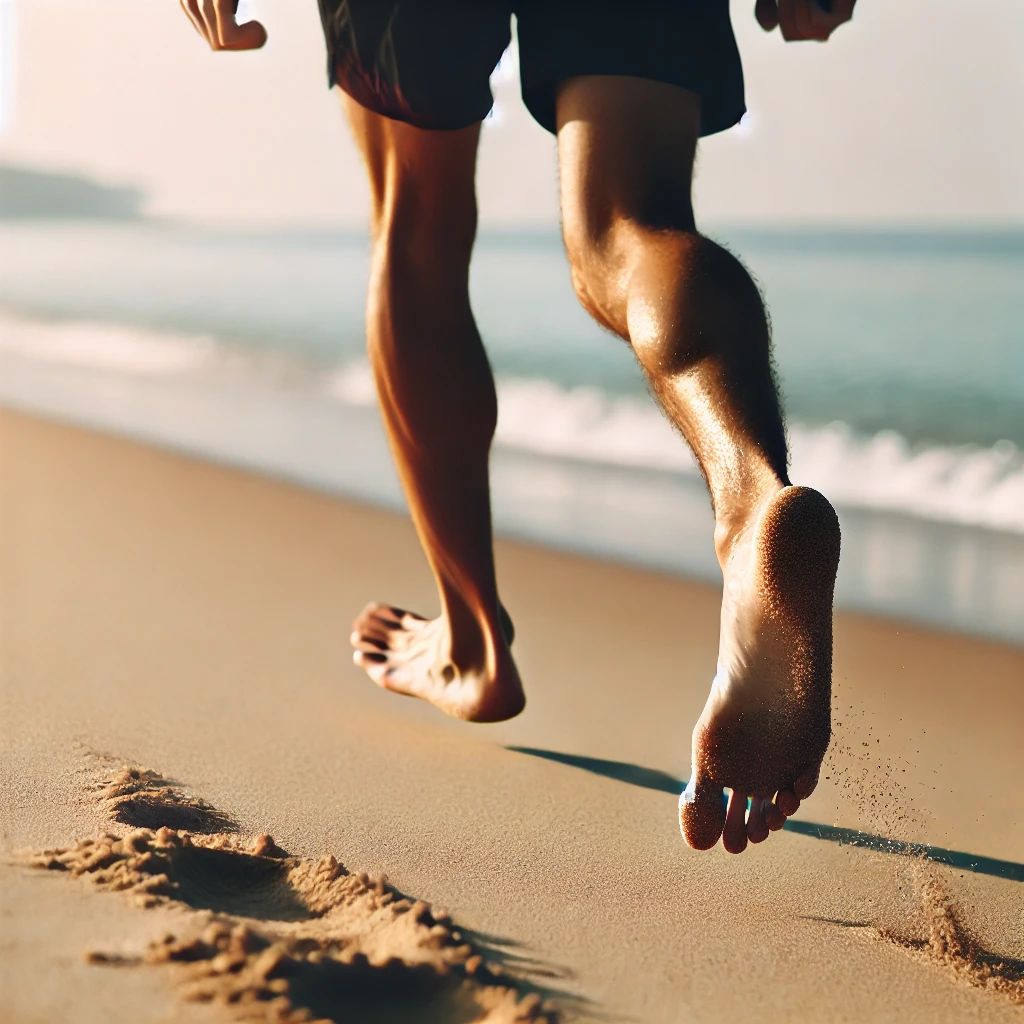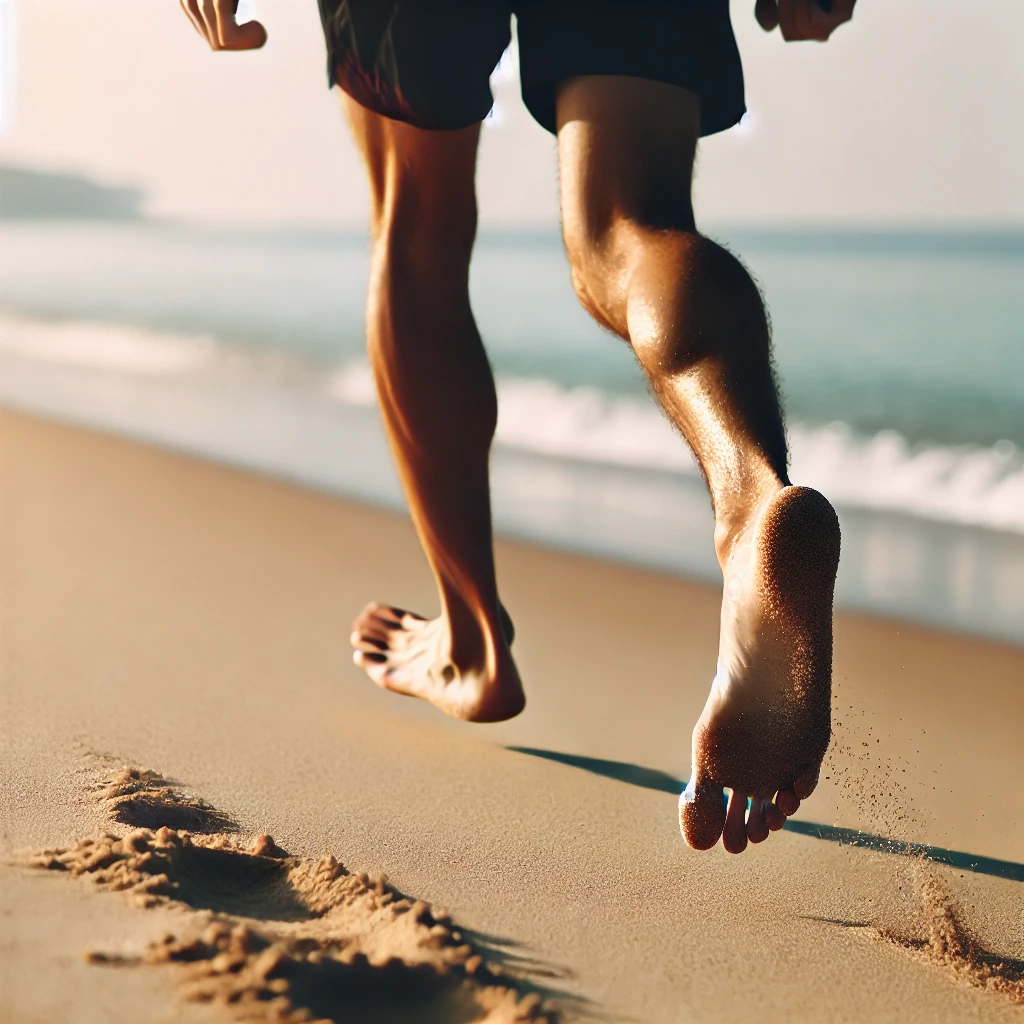Barefoot running is becoming an increasingly popular trend among health enthusiasts and athletes. This activity is centered around returning to natural forms of movement, either by running without shoes or with minimal footwear. While it may seem simple, barefoot running offers numerous health benefits, not only strengthening the muscles of the feet and ankles but also improving overall posture and reducing the risk of certain running-related injuries.
Running without shoes is not a new practice. Our ancestors ran barefoot for thousands of years before the advent of modern footwear. This natural way of running allowed people to strengthen the muscles in their feet, ankles, and legs, while also improving balance and endurance.

Benefits of Barefoot Running
Strengthening the Muscles and Tendons of the Feet
Shoes with thick soles reduce the natural movement of the feet and weaken the muscles. Barefoot running allows for direct contact with the ground, engaging and strengthening the small muscles in the feet and ankles. This can help prevent injuries such as plantar fasciitis.
Improving Posture and Gait
Running without shoes changes the way the feet strike the ground. Instead of heel-striking (common with cushioned shoes), barefoot runners tend to land on the midfoot or forefoot, which reduces the impact on the joints and knees, leading to improved posture and biomechanics.
Reducing Injury Risk
Many modern shoes are designed for support but limit the natural movement of the feet. Barefoot running engages the body’s natural shock-absorbing mechanisms, which can lower the risk of stress-related injuries, such as tendinitis and knee pain.
Enhancing Balance and Coordination
Running barefoot provides better sensory feedback from the terrain. This information helps the brain coordinate movements more efficiently, improving balance and body awareness.

Challenges and How to Start
While barefoot running offers many benefits, it’s not advisable to jump straight into long runs without shoes. The transition should be gradual to allow the body to adapt. It’s best to start with short barefoot walks or runs on soft surfaces like grass or sand, and then gradually increase running distances over time.
Learn more about physical activity and its benefits
Tips for Safe Barefoot Running
Start Slowly: The transition to barefoot running requires time. Begin with short intervals and gradually increase your running time.
Run on Natural Surfaces: Initially, use soft surfaces like grassy areas or sand to protect your feet and avoid discomfort.
Stretch Regularly: Stretching the muscles and tendons in your feet and ankles will help prevent injury and improve flexibility.
This running provides a natural and effective way to enhance your physical health by returning to basic, natural forms of movement. With the right approach, this activity can bring long-term benefits to both body and mind, while also offering a fresh perspective on exercise.
Find more similar topics in the Health Journal.
More Useful Links:
Walking on Uneven Terrain: Strengthen Your Feet and Ankles
Mountain Climbing Without Equipment: Strengthen Your Body and Mind
Brisk Walking: A Simple Way to Great Health
Bodyweight Outdoor Training: Strength and Endurance without Equipment
